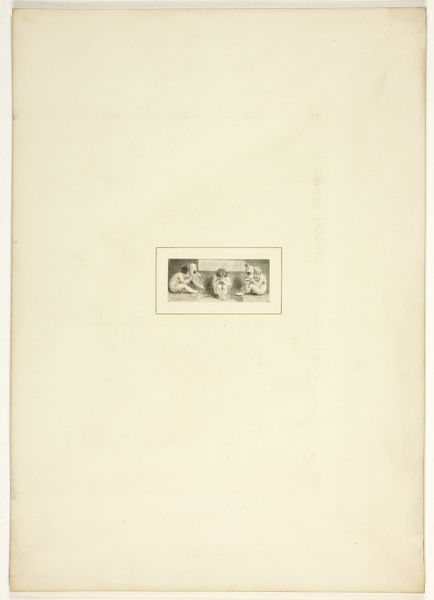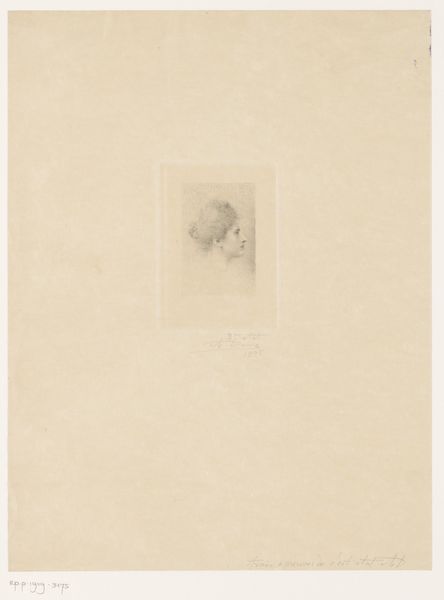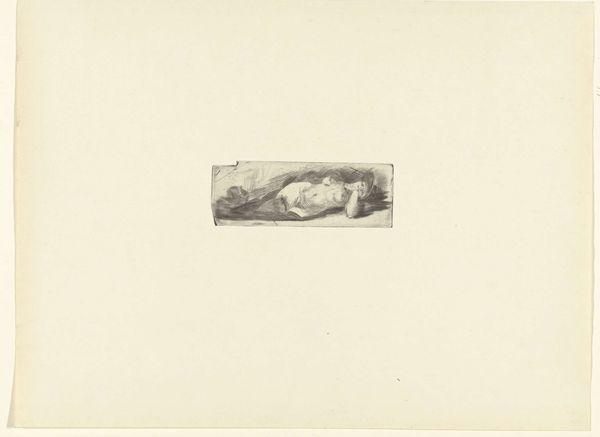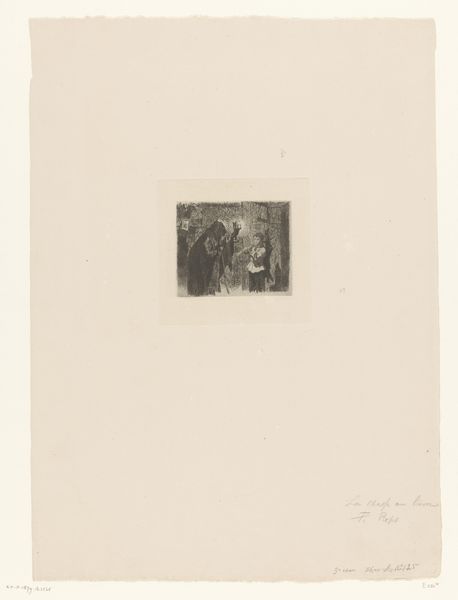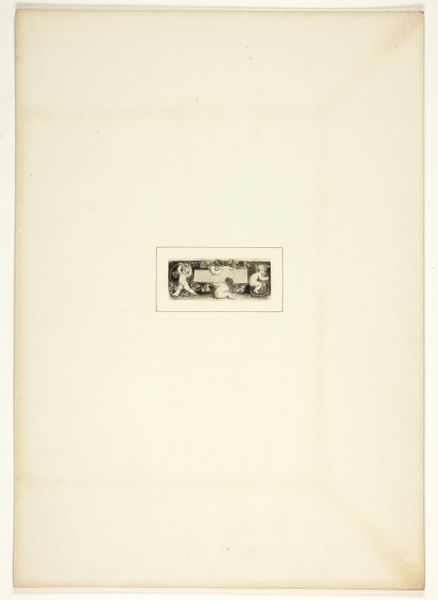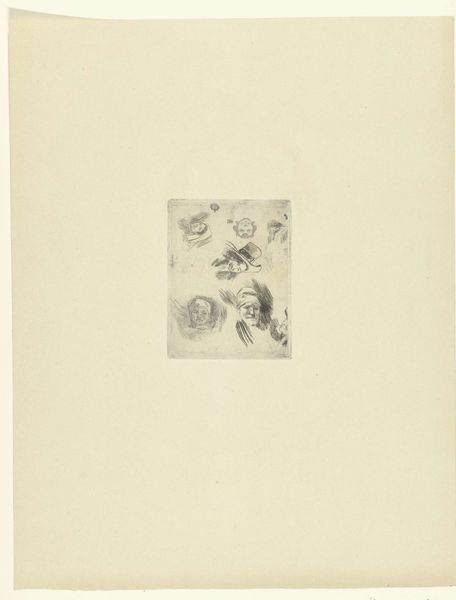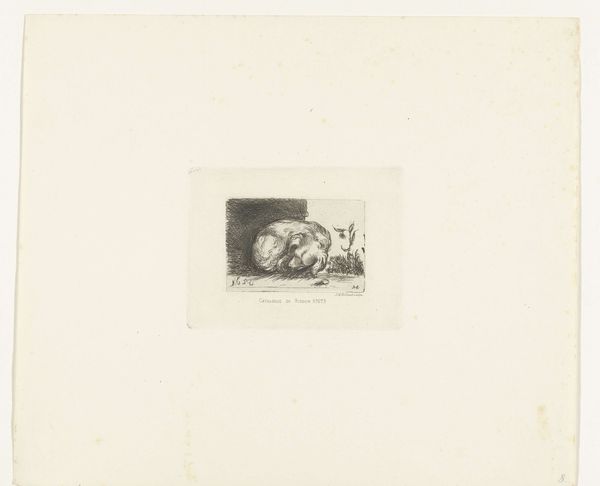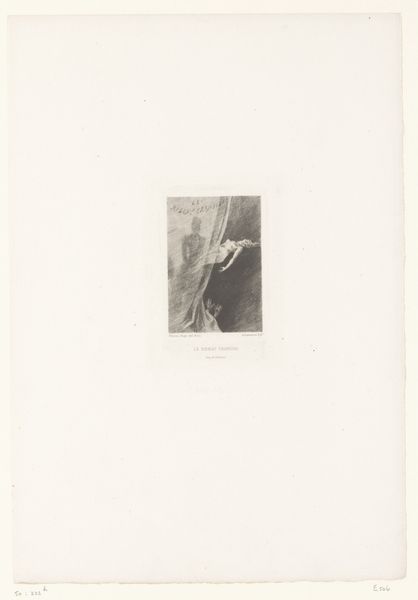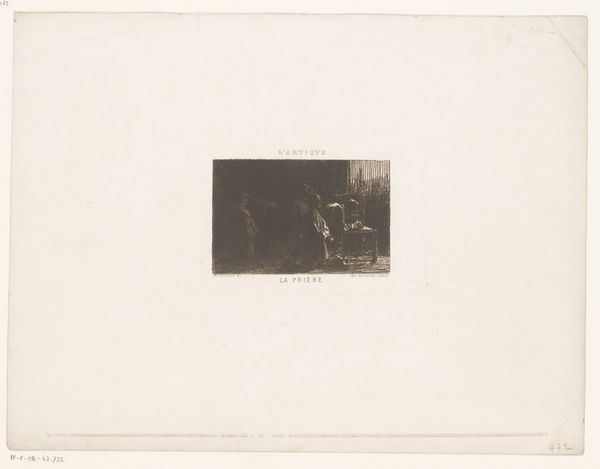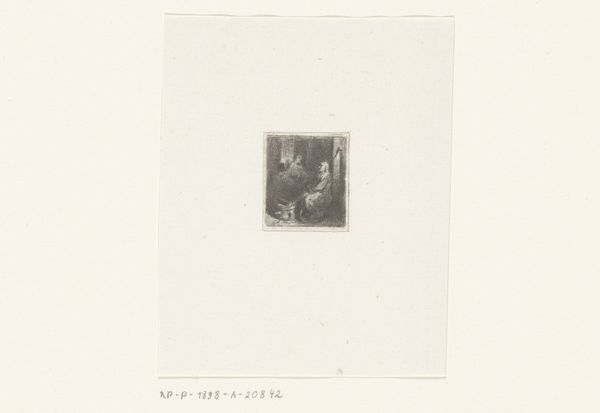
Study for a plate from The Triumphs of Temper, in the 1796 Royal Engagements Pocket Book c. 1795
0:00
0:00
drawing, print, etching, paper, ink, engraving
#
drawing
#
ink paper printed
# print
#
etching
#
paper
#
ink
#
romanticism
#
water
#
history-painting
#
engraving
Dimensions: 30 × 62 mm
Copyright: Public Domain
Curator: Up next we have Thomas Stothard's "Study for a plate from The Triumphs of Temper, in the 1796 Royal Engagements Pocket Book," made around 1795. The medium combines etching, engraving, and ink on paper. It resides here at the Art Institute of Chicago. Editor: The first thing that strikes me is its diminutive scale. The image feels lost within the vastness of the surrounding paper. There's a fragility to the marks, an ethereal quality enhanced by the limited tonal range. Curator: I agree, its small size is a critical aspect of its construction and reception; this was intended as an illustration for a pocketbook, an intimate object. Structurally, observe how Stothard has used curvilinear forms to suggest a sense of continuous motion and flow. The figures and drapery intertwine, creating a unified, if somewhat indistinct, whole. Editor: It's interesting you mention the implied motion. Looking closer, one wonders about the socio-economic context of the printed image; who consumed them? It's quite possible the pocketbook format made the work more available, and in effect democratic, by virtue of cheap production methods. Curator: Undoubtedly. Yet, it’s important to remember this was a luxury item still, not readily available to everyone. If you inspect closely, note the very deliberate placement of light and shadow, the contrasting textures he manages to elicit despite the constrained scale of the work. One sees a mastery of engraving techniques; that's clearly designed to draw the eye to key narrative elements. Editor: Narrative elements which, as you rightly point out, required intense labor and specialist skills. Do you get a sense of the conditions of this labor simply by looking at this print? The very concept is absurd! However, it's clear the intended audience consumed printed ephemera; one shudders to think what was recycled afterwards... Curator: Fair point. Perhaps my focus leans too heavily on the visual. Nonetheless, through compositional harmony and thematic allusion, the print aims to transcend the merely functional. Stothard offers, here, something genuinely emotive; a sense of the Romantic era. Editor: Maybe, yet, one should recognize the means of production and their historical contingencies; the physical circumstances that underpin something apparently beautiful. Curator: True enough; these are rarely separate considerations in artwork like this, even if one approach is taken, or emphasized, more than another. Editor: Absolutely. It serves as a pertinent reminder that how things are made affects how and by whom they are experienced and interpreted.
Comments
No comments
Be the first to comment and join the conversation on the ultimate creative platform.
